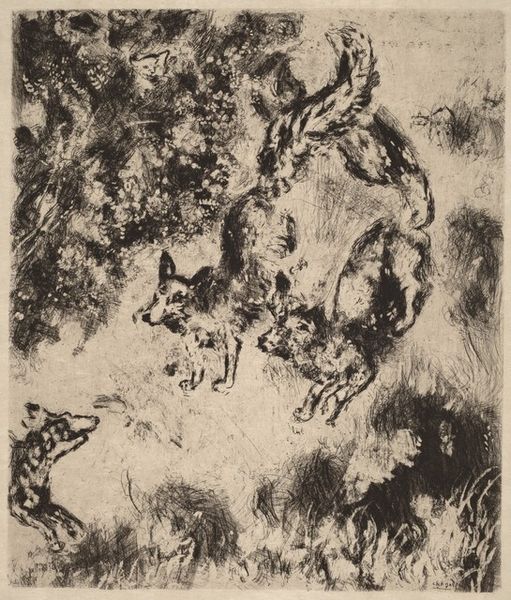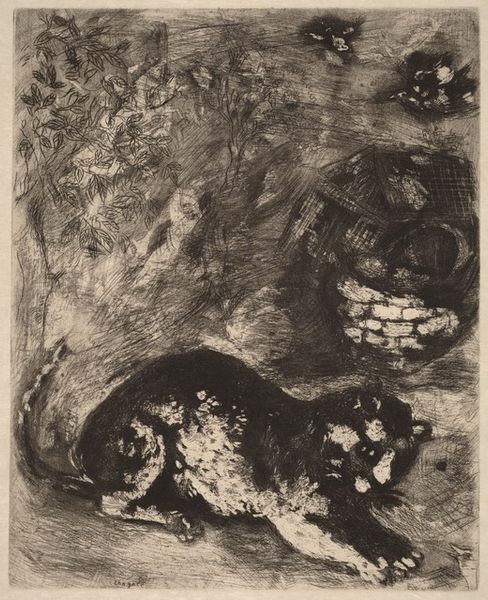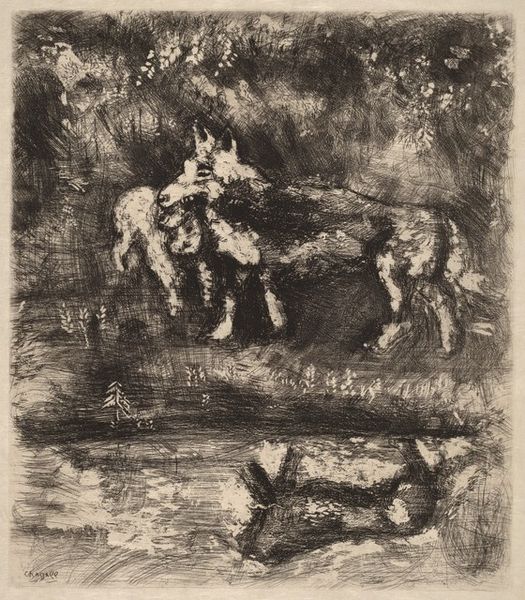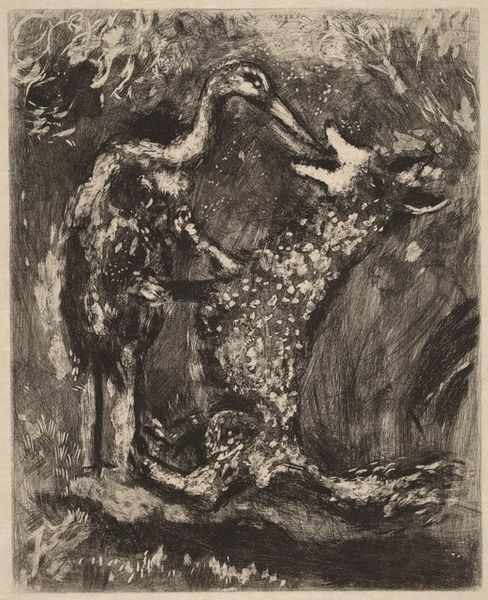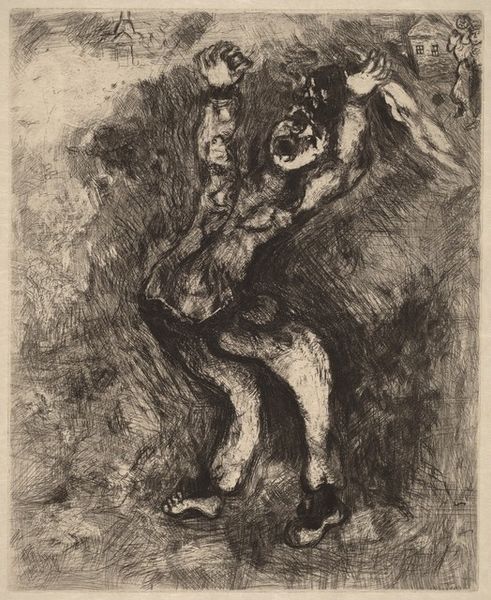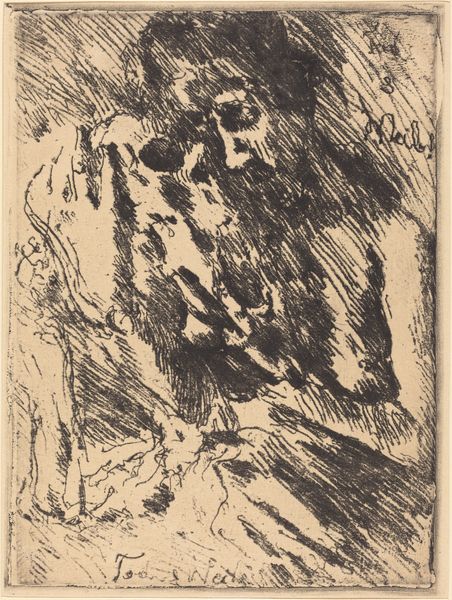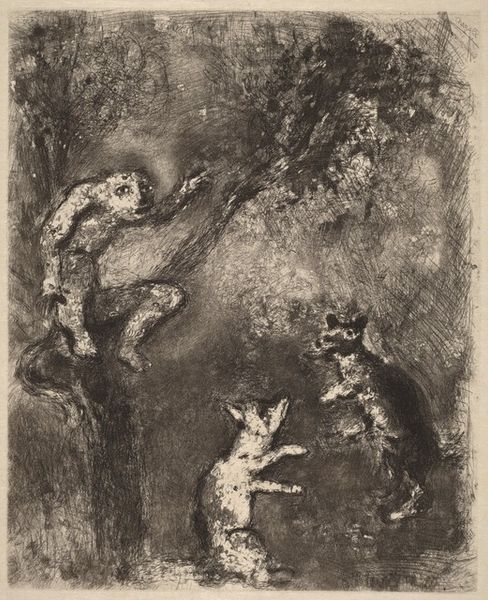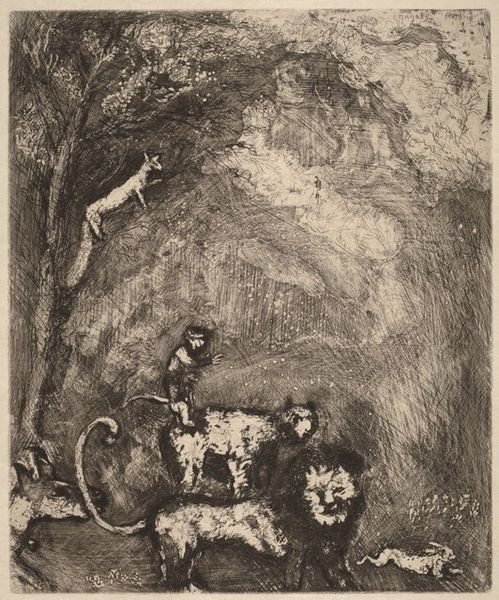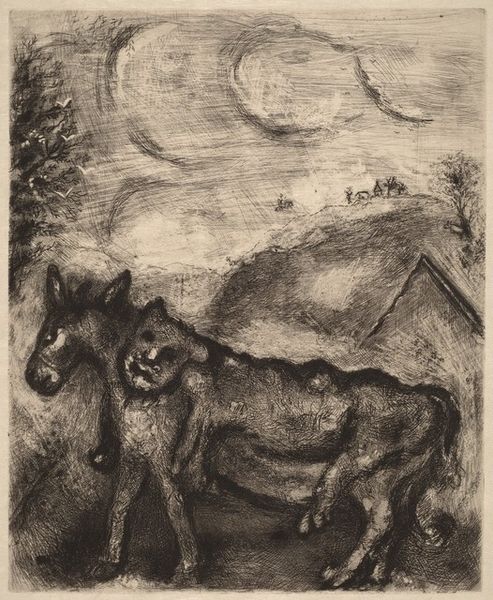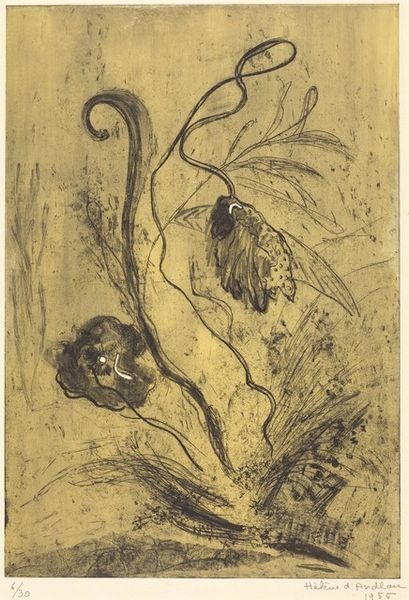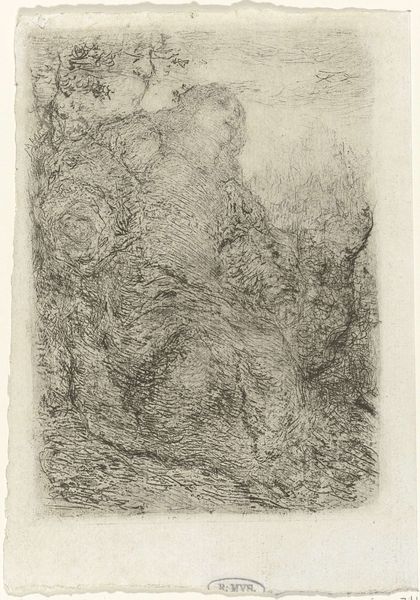
Copyright: National Gallery of Art: CC0 1.0
Curator: Marc Chagall’s etching, "The Two Bulls and the Frog," created between 1927 and 1930, presents such a fascinating tableau. Editor: Absolutely. The swirling lines and intense darkness create this brooding atmosphere. What strikes you most about it? Curator: I'm immediately drawn to the symbolism within its socio-political context. Consider Chagall’s background. He was deeply affected by political unrest. Could these bulls represent opposing forces in society, maybe political ideologies clashing? And the frog – what role could that play? Editor: Maybe a commentator? A neutral observer caught between the larger powers? I’m interested in the visual weight too. Curator: Precisely! Think about power dynamics at play during the interwar period. Do you see how the imposing size and weight of the bulls contrasts sharply with the diminute form of the frog, suggesting the limited agency of the individual amidst dominating powers? Editor: I didn’t consider that, but it makes sense. I guess I was reading the frog as more of a traditional fable character. Curator: Fables often served as allegories for social realities, wouldn’t you agree? So how does this affect your understanding? Editor: It definitely adds a layer of complexity, seeing it as less whimsical and more pointed in its critique. I was initially caught up in the aesthetics but thinking about it historically makes the etching even more compelling. Curator: Art opens up for broader understanding when considered in this kind of dialog. It lets us view both present and past in richer color.
Comments
No comments
Be the first to comment and join the conversation on the ultimate creative platform.

